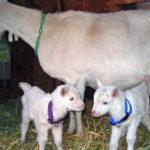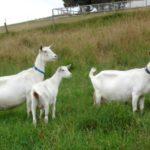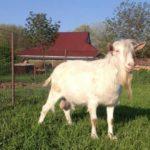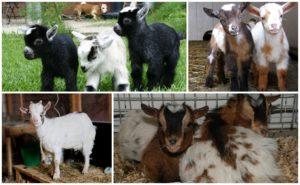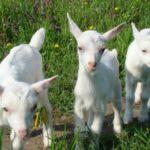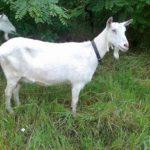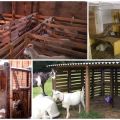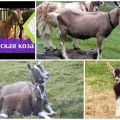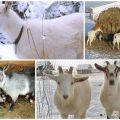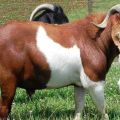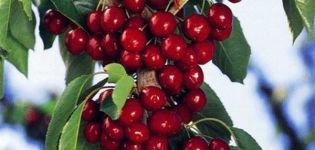Description and characteristics of Saanen goats, care for them and how much they cost
Zaanen pedigree goats are famous for their high productivity. These hornless white animals give up to 6 liters of milk per day. They feed mainly on grass in summer and hay in winter. They rarely get sick and only due to incorrect content. The Zaanen breed has delicious sweetish milk with a hazelnut flavor. The term of economic use is 8-10 years.
Breeding history
Saanen goats belong to the Alpine variety. They were bred on the territory of Switzerland in the Zaanenthal Valley, therefore they are sometimes called Zaanenthal. For several centuries, Swiss breeders have selected the most productive dairy goats for further breeding. Local breeds participated in the selection. In the Middle Ages, even the poor inhabitants of the Swiss Alps could afford these animals.
As a breed of Saanen goats were registered only at the end of the 19th century. These animals were highly productive, that is, they could give 3-6 liters of milk per day. Soon, the Zaanen breed was specially bred for sale in other countries.
During the years of the USSR, they were forgotten, and remembered only after the collapse of the Soviet Union, that is, at the end of the 20th century. Purebred animals were again brought from Western Europe to Russia for breeding and improving local individuals.
Description and characteristics of Saanen goats
The main distinguishing features of this breed are the absence of horns, white color, large spherical udder. The body of the Saanen goat has the proportions characteristic of the dairy variety. It is trapezoidal, that is, expanding towards the back. The animal has a large belly, a barrel-shaped body, well-visible hungry pits. The back is straight, with a slight bend. Legs are thin, of medium length, with strong, cloven hooves. The tail is short, mobile, directed upwards or horizontally.

The head is light, graceful, hornless, that is, hornless. The nasal septum is concave. The ears are small, erect, narrow, spread out to the sides. The neck is thin, long, with outgrowth earrings on the throat. The eyes are light, with slit pupils. The udder of milking goats is large, spherical, pulled up to the belly. The nipples are oblong and protruding in different directions. The udder protrudes beyond the hind legs, that is, it has a "reserve". The skin on it is thin, pinkish. The udder is covered with light hairs.
The coat is short, without undercoat, but dense and tight-fitting.The color is white, sometimes there are yellow-white Saanen goats. The height at the withers is 75-95 cm, the length of the body is 1-1.2 meters. Males are larger than females, they have a beard. The weight of adult goats is 50-70-105 kg. Females give birth to kids weighing 3-4 kg. On a day, goats give 3-6, and sometimes 8, liters of milk with a fat content of 4.5 percent.
The main pros and cons of the breed
Geography of distribution
Saanen goats are bred in Europe. Asia has its own breeds of dairy animals. As before, the Saanen fish are grown in their homeland (Switzerland). Delicious cheeses are made from the milk of these animals. There are many of them in Great Britain, France, Germany. The Zaanen breed is known and grown in the USA, Australia and in some African countries.
There are these goats in Ukraine, Moldova and the European part of Russia. The Saanen breed is usually crossed with native animals to improve performance.
The nuances of the content and rules of care
A separate room should be allocated for keeping goats. One individual should have about 4 square meters of area. Milking goats are vulnerable to drafts and dampness. The barn should be warm (all year round from 12 to 20 degrees Celsius), dry and clean.
The room can be equipped with a ventilation system. In winter, the barn is insulated or infrared heaters are turned on. It is advisable to build a room for goats made of wood, no more than 2.5 meters high. The attic can be used to store straw.
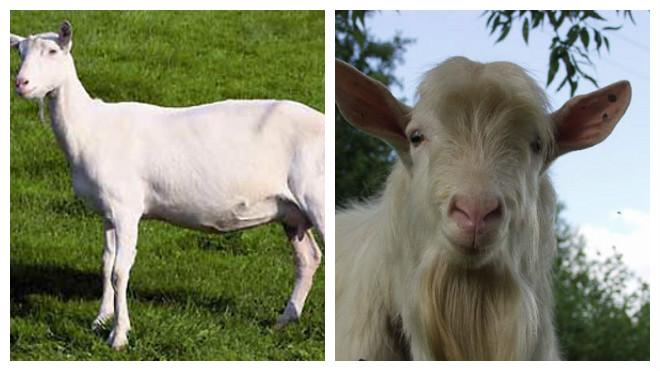
There should be a manger for hay, feeders for grain and vegetables, and drinking bowls (bucket) for water. Goats are fed (in stables) twice or thrice a day. From spring to autumn, animals are grazed in the pasture. At lunch they are driven into the stall. Females are milked 2-3 times a day in special stalls. It is advisable to keep the goats separately from the goats so that the milk does not absorb foreign odors during milking.
The floor on which the animals will rest can be made of wood or concrete. Straw is used as bedding. It is replaced daily. It is advisable to make the floor at an angle or with slots so that the sewage does not flow under the animal.
Animal diet
The health of goats and their productivity depend on the quality and quantity of feed. Animals should not starve or overeat. The menu is made taking into account the age of the goats. The diet of adults should contain juicy and soft food (green grass, hay from young meadow or forest plants, finely chopped vegetables), roughage and concentrates (straw, branches of trees or shrubs, grain mixtures, mixed fodder, chopping, chaff). The main thing is to observe proportions.
Representatives of the Zaanen breed should eat 4-6 kg of fresh grass per day. In summer, it is recommended to graze them in the pasture. Additionally, you can give salt and grated vegetables (carrots, beets, Jerusalem artichoke, pumpkin), beet tops. If animals are grazing in a meadow, it is recommended that they do not eat poisonous or soapy plants. Between feedings, give water (up to 5 liters at a time). They drink twice a day.
In winter, animals are given hay (up to 3 kg per day), as well as vegetables (up to 1 kg), grain mixtures (up to 0.5 kg). Too much grain can affect the digestive system and health of the goats. This product can induce ketosis (a dangerous disease). It is advisable for the representatives of the Zaanen breed to give less roughage (branches, straw) to preserve their teeth. Over time, they grind down and even fall out. Toothless goats will eat poorly and will not be able to produce much milk.
Breeding Saanen goats
When the females are 1-1.5 years old, they can be covered. At the time of mating, animals must weigh at least 40 kilograms. They cover the females, as a rule, in the fall, so that the kids are born in the spring, and in the summer the young are brought to the pasture. Pregnancy lasts only 5 months. The first time a goat begins to milk after lambing. Usually 1-2 cubs are born. Up to 3 months of age, the kids are kept under their mother. To prolong lactation, animals are covered every year.
During pregnancy, milking females are started, that is, they stop milking. Grain and succulent feed (silage) are excluded from their diet. Water gives less. They are fed with legumes and cereal hay. For the prevention of pathologies in the development of the fetus give pharmaceutical vitamins and minerals ("E-selenium"), carrots, Jerusalem artichoke, spruce and pine branches. Grain mixes can be given to goats a month before giving birth. After lambing, the females are fed with silage, vegetables and always high-quality hay. To replenish the body with useful substances, females and little kids are injected with pharmacy vitamins.
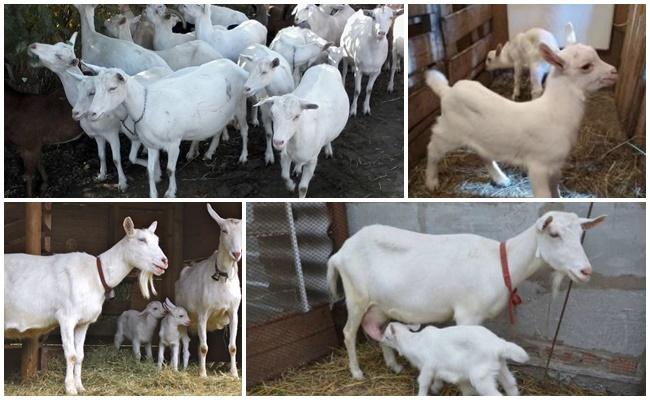
Diseases, treatment and prevention
Representatives of the Saanen breed have excellent immunity. They get sick only in case of improper maintenance or malnutrition. In cold weather, goats can catch a cold, so it is recommended to keep them indoors all winter, up to freezing temperatures.
Dairy females can develop udder mastitis if not properly milked or kept on dirty, wet bedding. Excess water, grains, legumes, and soapy grasses, or grazing in rainy weather can lead to stomach problems. Vaccination saves you from infectious contagious diseases. Kids (at 3 months) are vaccinated against anthrax, brucellosis, smallpox, rabies, foot and mouth disease, parasites.
How much is?
Saanen goats can be purchased for $ 200-1000. The price depends on the purity of the breed. The breed of animals is determined by the exterior and milk yield. It is advisable not to buy goats over 7 years old. This is the age limit for their economic use. The peak of productivity occurs at 4-5 years of age. Keep them up to 8-10 years.
